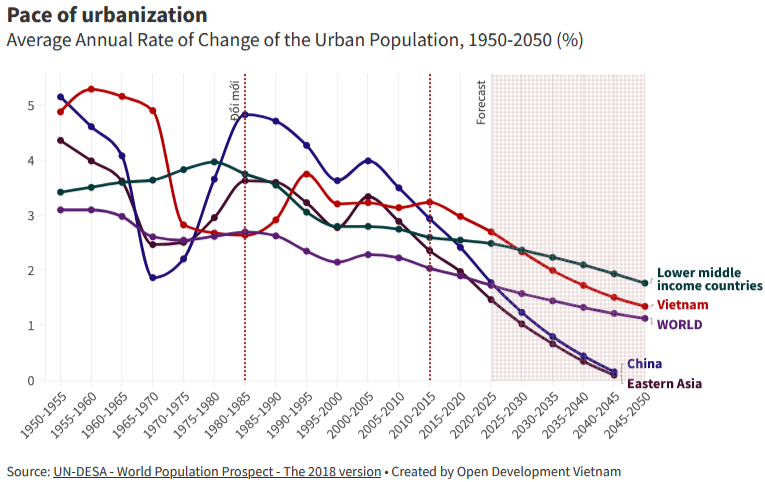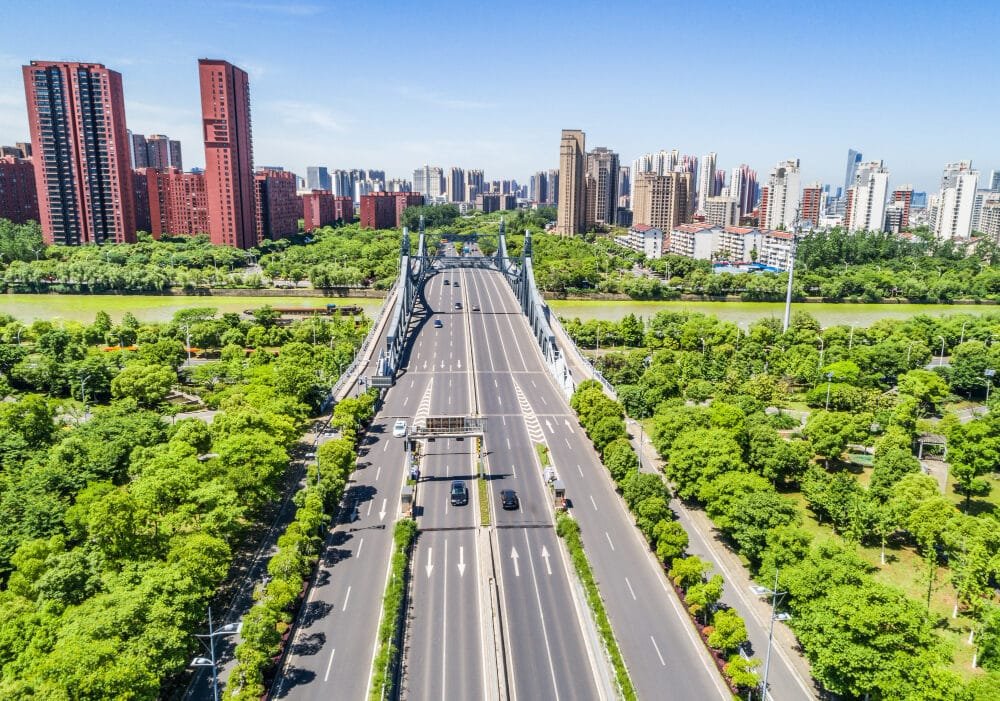Vietnam is undergoing rapid urbanization, a key factor that is driving demand for both residential and commercial construction. As people migrate from rural to urban areas in search of better living and working conditions, cities across the country are expanding at a swift pace. This transformation of is not only reshaping the urban landscape but is also playing a vital role in defining the future of Urbanization and Construction Vietnam. Keep reading to find out more!
Urbanization and Construction Vietnam: A Growing Trend

The pace of urbanization in Vietnam is rapidly increasing, with the country’s current urbanization rate at 42.6%. Many people are leaving rural areas to move to cities like Hanoi and Ho Chi Minh City. They are drawn by the promise of better jobs, improved education, and modern lifestyles. This influx of people creates a rising demand for housing, commercial buildings, and other urban infrastructure, pushing the Urbanization and Construction Vietnam industry to new heights.
The Vietnamese government is committed to promoting urban development. By 2025, the goal is to achieve an urbanization rate of at least 45%, with the ambition to exceed 50% by 2030. To support this growth, significant investments are being made in infrastructure projects, including roads, bridges, and public transport systems. In short, all of which are essential to modern urban living.
Rising Middle Class: Driving Demand for Modern Housing
Vietnam’s growing middle class is another crucial factor contributing to the increased demand for modern housing and commercial developments. This group’s rising income levels have shifted consumer expectations, leading to a higher demand for better quality housing, shopping malls, and offices. For the construction industry, this translates into immense opportunities to expand, as more people seek affordable but modern living spaces. This is particularly in the country’s major cities.
Many construction companies are focusing on building not only traditional residential properties but also mixed-use developments such as “shophouses.” These two or three-story buildings combine commercial spaces, often located on the ground floor, with residential areas above. Such properties are increasingly popular in Vietnam’s cities, allowing owners to use their homes for both living and business purposes. It’s one example of the growth of Urbanization and Construction Vietnam.
Green Economy and Infrastructure Investments
The future of Urbanization and Construction Vietnam is also being shaped by a global shift towards sustainability. As more people and businesses look for environmentally friendly solutions, there is growing interest in “green” buildings and infrastructure. These projects focus on reducing energy consumption and incorporating sustainable materials, opening up new opportunities for innovation within the construction sector.
The Vietnamese government, along with private investors, is increasing investments in infrastructure. From transportation to energy systems, developing strong and efficient infrastructure is crucial for supporting the country’s growing population and economy. This includes improving road networks, airports, and ports, all of which are critical to maintaining the momentum of Vietnam’s economic development.
Urbanization and Construction Vietnam: Challenges on the Horizon
While the construction sector is experiencing rapid growth, there are still several challenges that must be addressed. Regulatory reforms are needed to ensure that Urbanization and Construction Vietnam is both efficient and sustainable. At present, the quality of urban infrastructure does not fully meet the demands of a growing population. Issues such as the risk of flooding and the need for more robust public transport systems require urgent attention.
Furthermore, while the construction industry has plenty of room to grow, economic uncertainty remains a concern. Regulatory challenges, coupled with inflationary pressures, can pose risks to the sector’s future success. However, with proper planning and continued investment, these challenges can be mitigated.
Urbanization and Construction Vietnam: The Future
Looking ahead, Vietnam’s construction sector is expected to grow by approximately 8% annually. This growth will be fueled by increasing urbanization, rising investments in infrastructure, and a greater emphasis on sustainability. The development of smart cities, as part of Vietnam’s urban planning strategy, will further drive demand for cutting-edge construction solutions.
In conclusion, Vietnam’s journey toward urbanization presents vast opportunities for both domestic and foreign companies. As more people migrate to cities, the demand for housing, commercial buildings, and modern infrastructure will continue to rise. For the construction industry, this marks an exciting time of growth, innovation, and transformation. The next few decades will see Vietnam’s urban landscape change dramatically due to Urbanization and Construction Vietnam. As a result, it’s helping to shape a prosperous future for the country.

